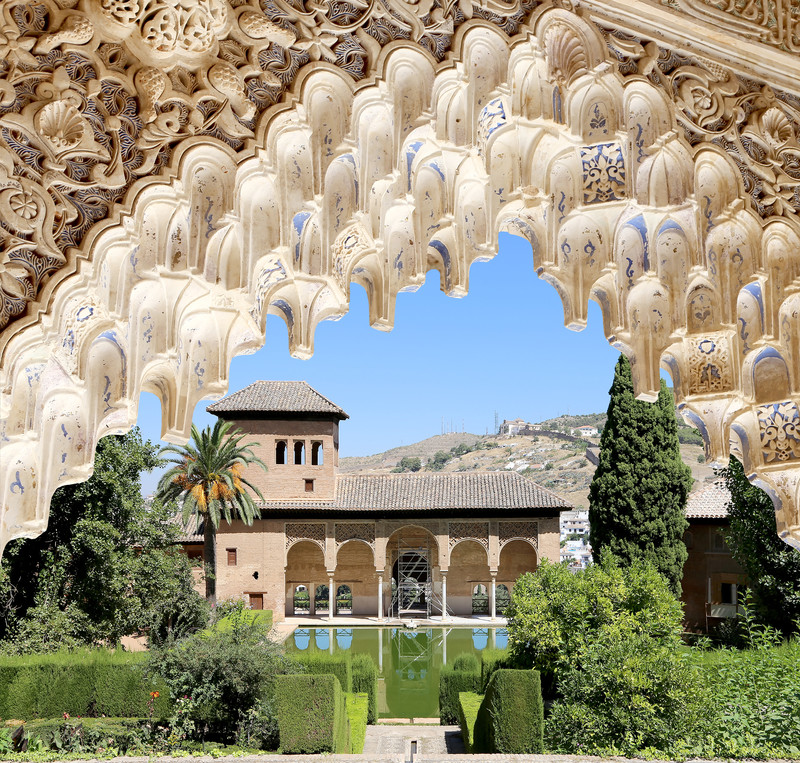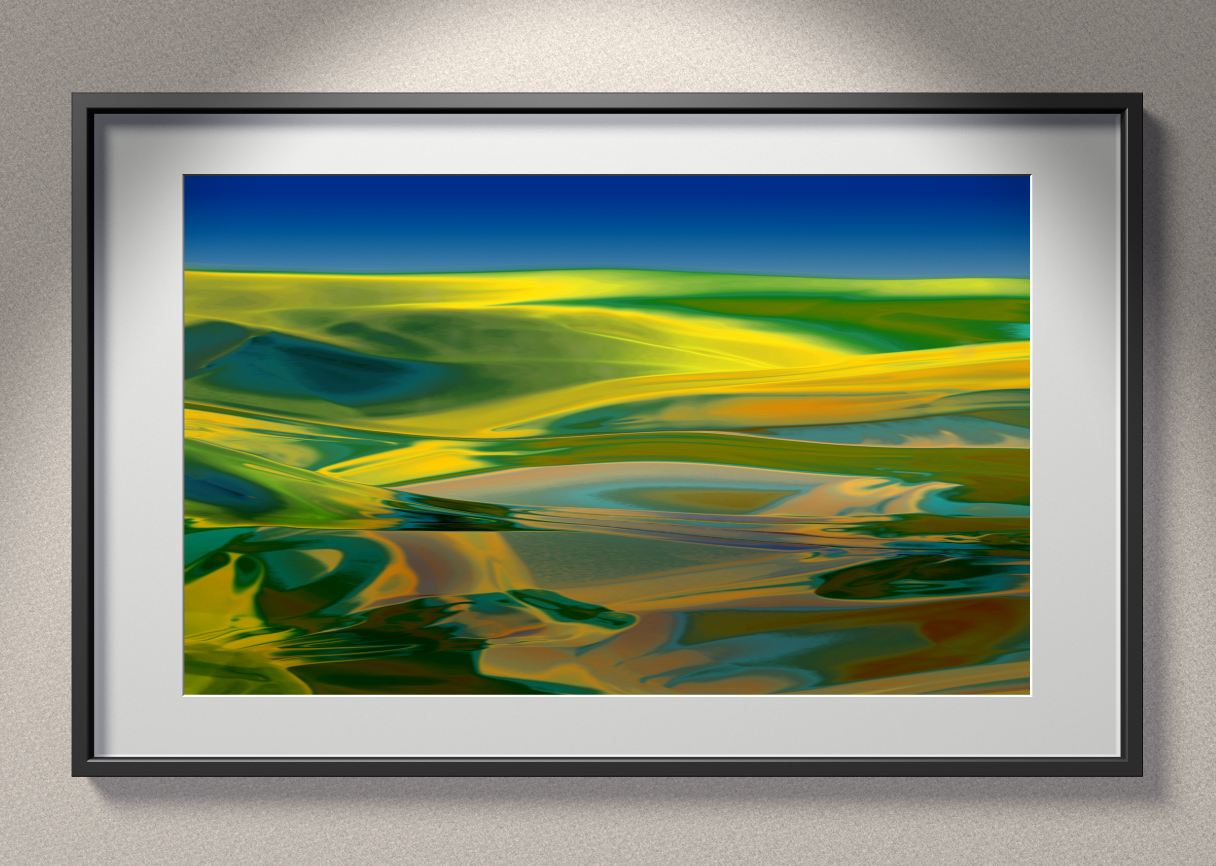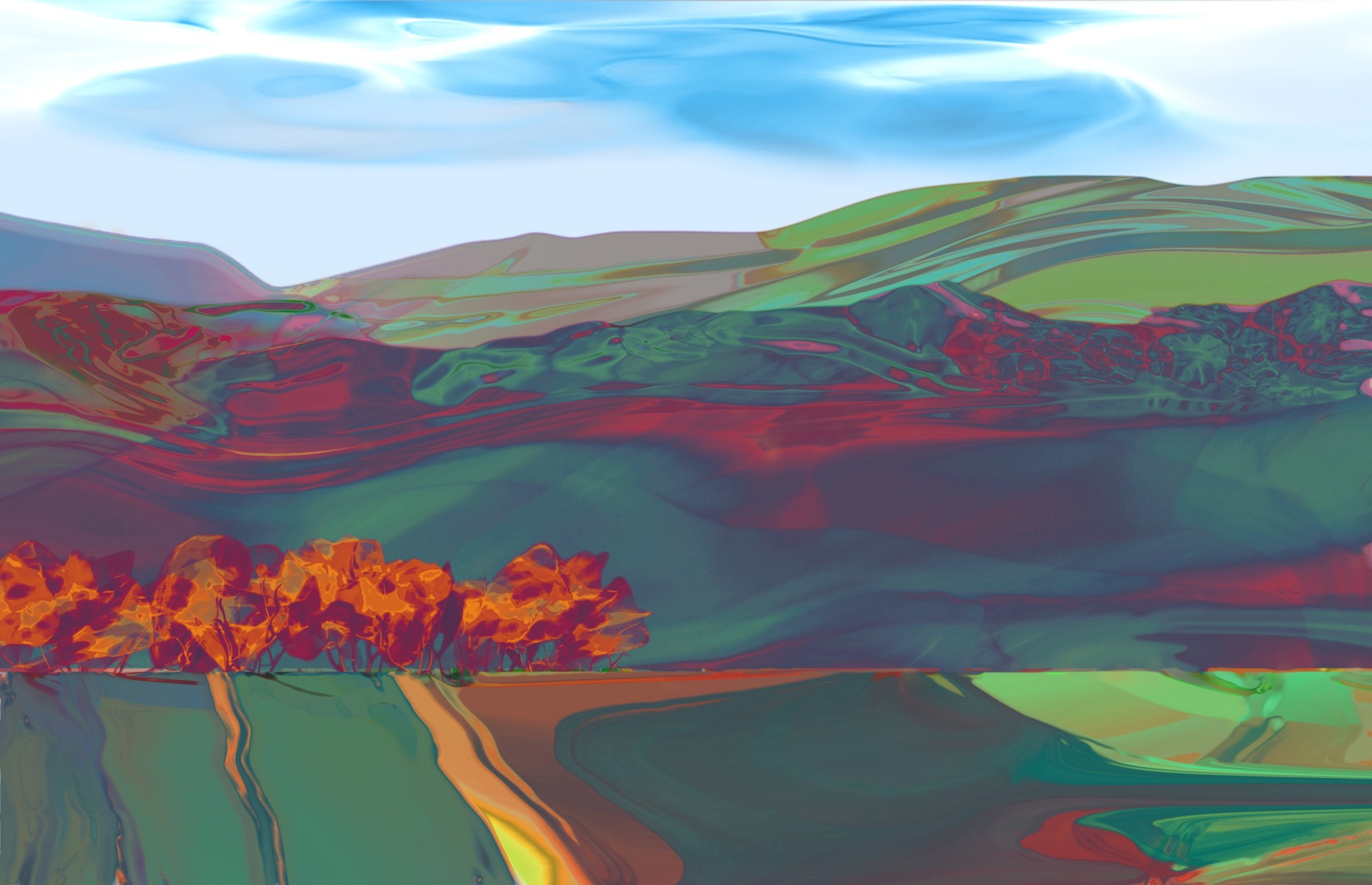Magical 3D Artistry From the 1300’s Casts a Spell in Spain

In Southern Spain, one of the great sights in Europe casts a mysterious spell on all who visit: the Alhambra. I visited this opulent Moorish palace in 2000, and its magic still resonates within me.
Under a warm Andalusian sun, my wife and I made our way into the palace, after 4 hours soaking up the exotic ambience of the surrounding gardens. From the outside, the Alhambra is modest, simple, and understated.
Then you step inside, and enter another world.
We slowly wandered through halls and courtyards, past reflecting pools and inner chambers in this otherworldly palace. Everywhere, across almost all surfaces, spectacularly ornate, complex carvings and geometric reliefs catch the sunlight… and fool the eye, like an architectural magic show. Time after time I got up close to look at the elaborate relief carvings covering the walls and ceilings.
The patterns are hypnotic.
At one point, I stood in front of a section of fantastically complex carving, and tried to focus my eyes on which areas of the pattern were actually concave, or hollow, and which were convex. Couldn’t do it. Mister visually trained, yours truly, the 3D guy, could not reliably resolve the 3 dimensional order of the forms I was looking at.
The sun lit this particular section at such an angle that the eye’s sense of depth shifted back and forth, like an M.C. Escher drawing. Only this was real.
As a 3D animation professional, trained thoroughly in fine arts back in the 70’s, experienced in design, illustration and computer graphics and then animation, over more than three decades working in advertising, I was humbled. And dazzled. Cross-eyed dazzled, in fact, by a close-up view of an incredible pattern of optical illusion, built right into the architecture itself.
The whole experience really did cast a visual spell. And that’s the interesting thing…
Not all magic is cheap trickery. Some of it is real. The artisans and sculptors who created the Alhambra conjured up real visual magic.

In a sense, their complex patterns of delicate carving are the ancestors of the pixels we work with today. All digital imagery is in fact made from patterns. Patterns of tiny picture elements, hence the word “pixels”.
Using contemporary digital tools, there are opportunities for artists to cast something of a spell too.
That’s been my aim for a long time.


